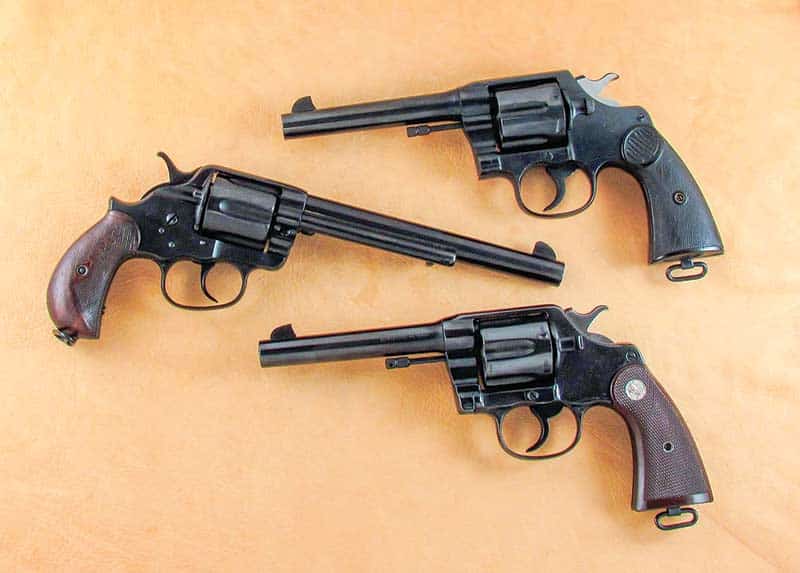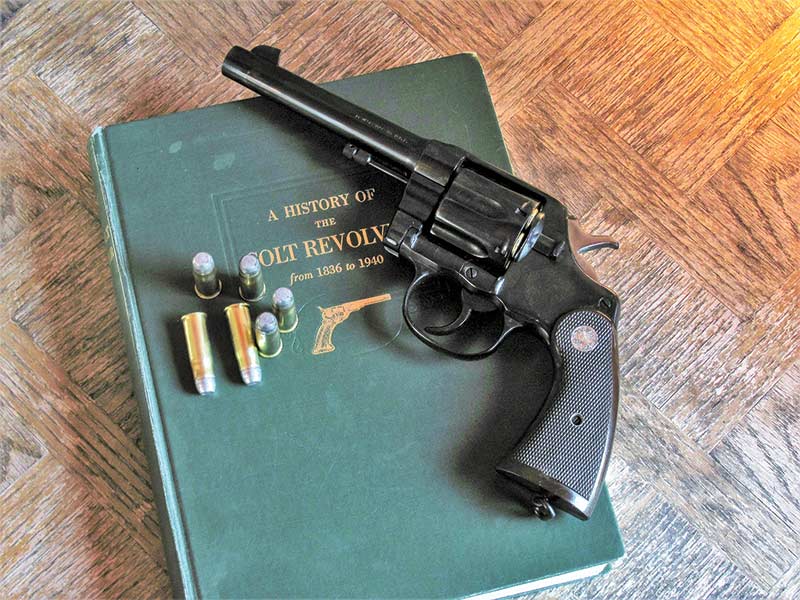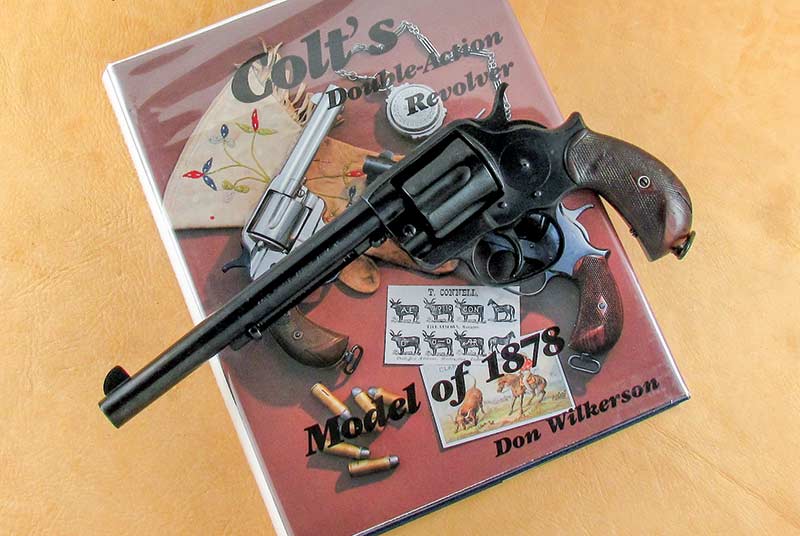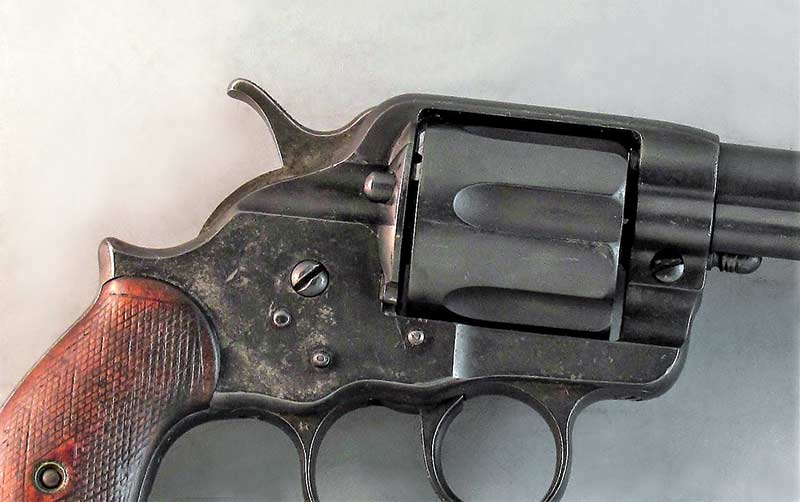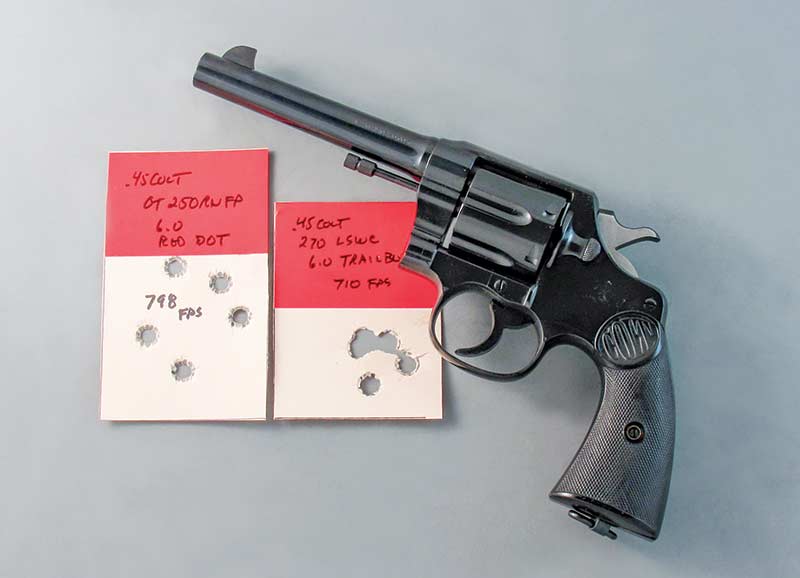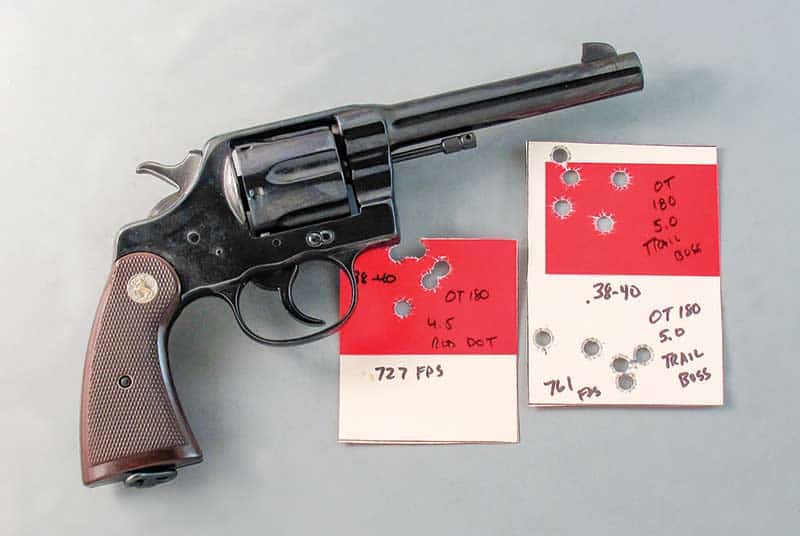As we look back at sixgun history, we can see a decades-long race between Colt and S&W to be the “firstest with the mostest.”
Colt was the first to offer a viable and truly usable repeating pistol with their 1836 Paterson. This was a percussion pistol — the user had to load powder and ball in each cylinder chamber and then place a cap on each nipple on the back of the cylinder.
Colt officially ignored any thought of fixed ammunition, so S&W emerged in the 1850s with the first .22 pistol — a seven-shot, tip-up pocket pistol. These were used as hideout guns, especially by officers during the Civil War, while Colt sold hundreds of thousands of Dragoons, 1851 Navies and 1860 Army percussion pistols to the military.
After the war, S&W offered the first big-bore cartridge firing sixgun in late 1869 with its .44 American, a top-break design. The United States Army was very interested in this first .44.
Colt countered by converting some of their percussion pistols to Cartridge Conversions, then offered the 1871–72 Open-Top, and then in 1873, one of the grandest sixguns of all time came from Colt — the Single Action Army. S&W also brought out their Model #3 Russian, followed by the New Model #3, both grand .44 single-action sixguns.
Colt began looking at the idea of providing a pistol that could be fired by only pulling the trigger, a design we normally call double action today. Colt was the first with the 1877 Lightning and Thunderer in .38 Long Colt and .41 Colt, respectively. These were basically miniature single actions with a double-action trigger added. One year later, Colt brought out their 1878 Double Action, which was the same size as their single action. It had a double-action trigger, but just like the 1877 Model, cartridges were ejected one at a time with an ejector rod and then replaced one at a time.
Meanwhile, S&W added a double-action trigger to their New Model #3. With its top-break design and simultaneous ejection, the S&W was much faster to load and unload than the Colt.
What we think of as double action sixguns today with swingout cylinders for loading and unloading began to appear in the late 1880s with the Colt Navy and Colt Army sixguns. In 1896 S&W began to produce the double-action revolver, which became the Military & Police in 1899, to be chambered in .38 Special one year later.
While S&W was concentrating on their .38 Special, which we now know as the K-Frame, Colt came forth with the first big bore double action revolver — the New Service — in the late 1890s. S&W would counter in late 1907 with their first N-Frame, the New Century or, as we know it better today, the Triple-Lock. That also brought a new chambering, .44 Special. From that time until the eve of WWII, adherents of each design lined up to proclaim their choice as the best big-bore double action.
The First Old Colt
Classic sixguns are where you find them, and I watch for the old classics; sometimes, they come my way unexpectedly. When my grandkids were still young and needed someone to stay with them while their parents were gone, Diamond Dot went up to Lewistown, Mont., where they all lived at the time.
They went to an auction sale while there, and Dot was bidding on an old Colt 1878 chambered in .45 Colt. The man bidding against her dropped out, and then someone else joined the bidding. She looked at him and said, “Why are you bidding against me?” He quit, and she got the old Colt for a very reasonable price. It was not in the best shape, and my local gunsmith, at the time at Shapels, had to repair the hand, for which he did an excellent job.
The gun had been poorly re-blued, and the barrel was cut even with the ejector rod and then a brass front sight installed. The grips were well-worn checkered walnut. But after the repair job, it was safe to shoot. It just looked like an old abused Colt.
A couple of years ago, my friend, well-known gunsmith Milt Morrison, moved to my area, and I decided this old Colt and two others could definitely benefit from his talented touch. A look through my parts box revealed a 2nd Generation 7½” Colt Single Action .45 barrel, which was turned over to Milt along with the old 1878 to be re-barreled and re-blued. He first installed the barrel so I could check it for windage and elevation, and then it went back to him to be totally re-finished. It now looks good enough to be out among mixed company.
The Second
The second Old Colt was a 5½” New Service also chambered in .45 Colt and manufactured between the two World Wars. I found this one in Texas at a shoot about 15 years ago, lying on the table and looking almost pristine — until you turned it over! One side of the frame and the cylinder were pitted. Milt said it looked like what he had seen with sixguns soaked in Coke. The barrel and cylinder were both in excellent shape, as was the action. However, the pitting lowered the price substantially.
I purchased this Colt with the idea of turning it into a Fitz Special complete with a shortened barrel, rounded grip frame and cut-out trigger guard. I made one huge mistake. I shot it first. It shot so well I felt it would be a shame to change it. So, for several years I just shot it as it was. However, with the arrival of Milt, this looked like a perfect chance to have it re-blued. He could not get all of the pits out without taking off a lot of metal; however, he did get most of them out, and this is now an excellent looking (as well as shooting) sixgun. With the Oregon Trail 250-grain RNFP over 6.0 grains of Hodgdon’s Red Dot, it clocks out at 800 fps with five shots in 11/8″. That’s why I didn’t turn it into a Fitz Special.
Colt 3
The third of this Trio of Old Colts was also a New Service and quite a bit older than the .45 New Service. Before WWI, the New Service barrels were straight; however, when Colt produced the .45 ACP Model 1917, the government asked for a collar around the barrel where it threads into the frame. This not only locks the barrel up tight against the frame, it also looks much better.
This older New Service had very little finish, let’s say none, and someone had hacksawed the barrel to 2″ and just left it alone — no re-crowning, no installation of a new sight. After this “custom” work, the .38-40 New Service had a price tag of only $200. Usually, this would not be worth buying; however, several years before, I had picked up a collared New Service .38-40 barrel at a gun show for $5, along with a Great Western .45 Colt barrel at the same price. I used the 7½” Great Western barrel on a Great Western movie gun with a shot-out cylinder and barrel, and using a Colt cylinder brought this old gun back to life.
The like-new 5½” .38-40 barrel was installed on the butchered New Service, and I now had a two-tone sixgun with a nicely blued barrel and the rest of the gun with little finish. One positive attribute was that the checkered Colt grips were in excellent shape. It lay in my safe for years, and I only shot it occasionally. Milt re-blued this .38-40, tuned up the action, and the result would make Duke Venturino, who also appreciates .38-40s, really like this sixgun. With Oregon Trail’s 180-grain RNFP cast bullet over 5.0 grains of Hodgdon’s Clays, it clocks out at just over 800 fps and places six bullets in one ragged hole at 20 yards. It was definitely worth purchasing and bringing back from the bone pile.
There is something about the old Classic Colts that just stirs my sixgunnin’ soul, spirit and heart. Yes, today’s guns, in many cases, are better than ever. However, Colt no longer offers a big-bore double-action sixgun, so I am very content with these. Either one of the New Service Colts could easily be used as an everyday Perfect Packin’ Pistol.
